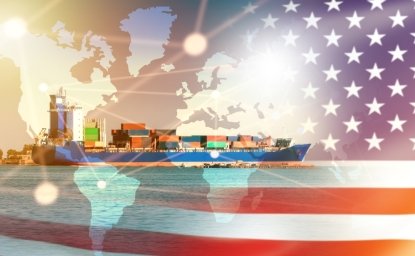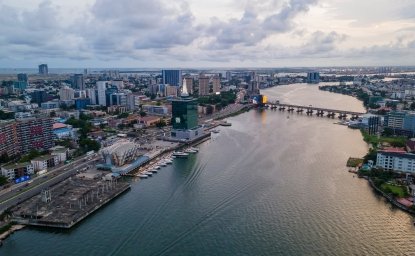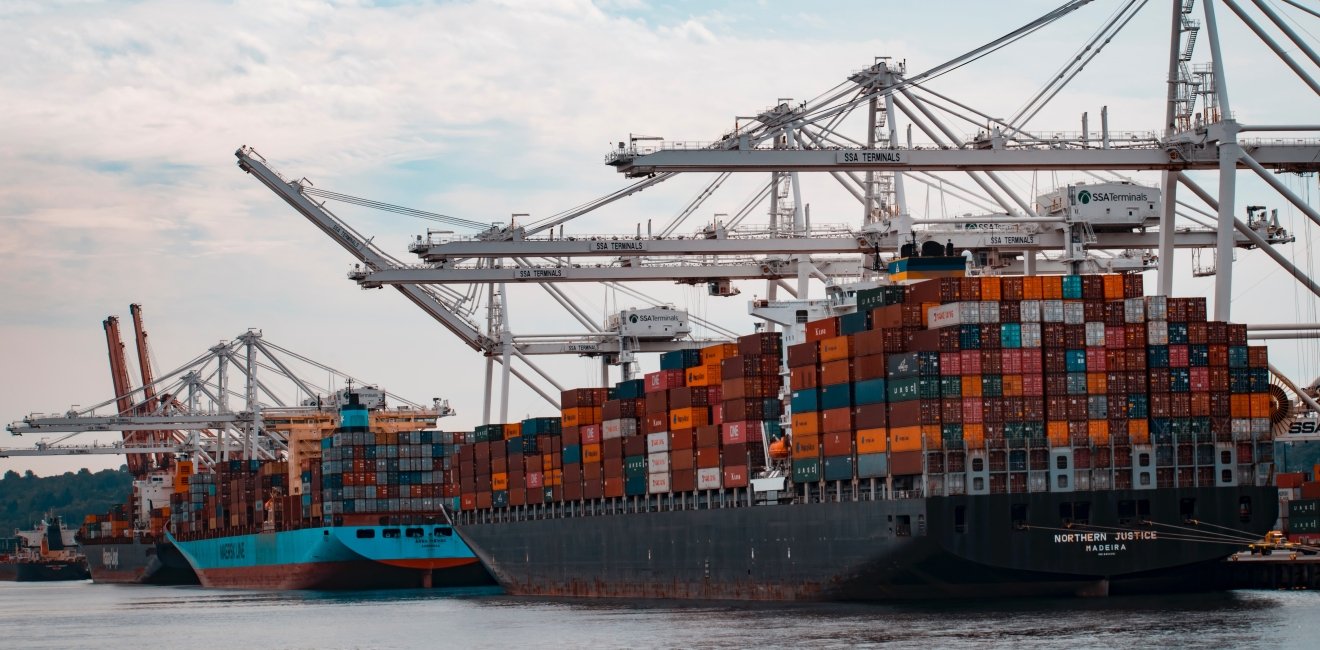On June 5, 2020, the United States’ Merchant Marine Act of 1920 (known as the Jones Act – JA) celebrated its 100th birthday. Canada’s Coastal Trading Act (CTA) dates from 1989. Both are a drag on the potential for the United-States-Mexico-Canada Agreement (USMCA) or Canada-United-States-Mexico Agreement (CUSMA, formerly NAFTA) to maximize the economic benefits of North American trade liberalization. Both call into question the economic viability of ‘repatriating’ supply chains to the United States and Canada in any post-pandemic scenario. During an early June 2020 conference in Washington, D.C., Utah Republican Senator Mike Lee said the JA had taken on the “trappings of immortality.”[1] It’s time to ring the death knell for cabotage protectionism via repeal or, at minimum, substantial liberalization to facilitate rather than impede much needed North American economic growth.
Some history
The JA requires marine shipments originating and terminating in U.S. ports to be carried on ships that are U.S.-built, U.S.-crewed, and U.S.-flagged. It applies only to domestic water shipments and not imports from another country on foreign-flagged vessels. There was a quasi-military rationale for the JA in the first instance; the First World War had just ended and supporters of the JA felt that a Merchant Marine should be incentivized to ensure sealift capacity for the U.S. Navy in times of war. Congress has acted since 1920 to make the original JA even more protectionist – while Administrations have retained some ‘definitional flexibility’.[2] However in what, arguably, was the biggest recent test of the military’s need for U.S.-flagged cargo capacity – the Gulf War – domestic shipping made little or no contribution. Foreign vessels were hired. And in national emergencies – such as Hurricane Katrina – Presidents have invariably waived the JA. Several recent attempts have been made to reform the JA; Senator Lee collaborated with the late Senator John McCain of Arizona to introduce the “Open American Waters Act.” The 2017 version of that legislation was the fourth reform effort since 2010. All stalled in Congress.
Canada’s 1989 CTA (which entered into force in 1992) is a somewhat less protectionist analogue to the JA. The principle is the same, however. Given that the Canada-U.S. Free Trade Agreement (CUSTA – which took effect in January, 1989) did not provide reciprocal access to the other country’s coastal shipping trade (or ‘cabotage’ – defined as “the trade or transport in coastal waters or airspace between two points within a country”)[3], Canada acted to protect its own industry. Later, in the NAFTA negotiations (culminating in the Canada-Mexico-U.S. agreement that took effect in January, 1994), while “Canada sought liberalization of the cabotage regime and aggressively pursued opening of the maritime sector, the United States did not want to open maritime transport services to the [NAFTA dispute resolution process] because it wanted to be able to maintain its ability to engage in retaliatory action under the Foreign Shipping Practices Act of 1988.”[4] In NAFTA, Canada agreed to do away with its 25% duty on U.S.-built ships (but received no U.S. concessions in return).[5] In 2010, Canada finally recognized the counterproductiveness of a 25% duty on ships built outside of Canada and the United States and amended the CTA to fully eliminate the duty, no matter where the ships were built.[6] Notwithstanding Canada’s NAFTA concession on tariffs, domestic traffic in both countries remained the exclusive preserve of nationally-flagged carriers. However, Mexico and Canada reached agreement in the NAFTA to open “international shipping services to the flag of the other country” (while Mexico preserved its domestic cabotage environment “because the United States failed to budge on protecting its cabotage traffic”).[7] Much more recently, Canada made cabotage concessions to the European Union to help bring the Canada-European Union Free Trade Agreement (CETA) to fruition in 2016.
Is protectionism on the seas working?
The short answer is no. Certainly not with respect to the JA’s original rationale. The size of the U.S. fleet has declined decade-by-decade; as of March 2018, there were only 99 oceangoing ships in the JA-compliant fleet (of which 57 are tankers – principally for the transport of petroleum and refined products).[8] The fleet’s diminished size means it is also of diminishing utility. At a March 2018 House Armed Services Committee hearing, the General in charge of military sealift testified:
“…the dwindling size of the domestic U.S. inter-coastal shipping fleet demands that we reassess our approach to ensure that the U.S. retains critical national security surge sealift capabilities. We also may need to rethink policies of the past in order to face an increasingly competitive future.”[9]
Senator Lee argues that the benefits of the JA have been concentrated in certain corporations and that the costs have been widely disbursed (they are borne by American consumers – who are not represented by any cohesive lobby group).[10] Apart from the North American shipbuilding industry, the main JA supporters are the crews in both the United States and Canada, represented by the Seafarers International Union of North America, who welcome the protection provided by the JA and the CTA.[11] William Olney, Professor of Economics at the University of Hawaii, quotes Senator McCain, who in 2015 called for “a full repeal of the Jones Act, an antiquated law that has for too long hindered free trade, made U.S. industry less competitive and raised prices for American consumers.”[12] Louis Bellemare cites the 2002 U.S. International Trade Commission study which estimated an annual economic gain to the United States from repealing the JA of between $5 billion and $15 billion (the cost of coastal shipping could be reduced by 60%!).[13] Consumers in Alaska, Hawaii, and Puerto Rico in particular are penalized for their dependence on JA-compliant shipping, especially without the options of road or rail transport (or limited options in the case of Alaska).
The case of the Great Lakes
The Great Lakes-St. Lawrence Seaway (GLSL) ‘inland waterway’ is more than 10,000 miles (17,000 kilometers) long. The system straddles the border between the United States and Canada for much of its length. Since the Seaway’s completion in 1959, more than 2.5 billion tonnes of cargo, at an estimated value of $375 billion, have moved to or from Canadian or U.S. GLSL ports (some of it destined-to or originating-from almost 50 other nations).[14] But, as the Congressional Research Service (CRS) pointed out, GLSL tonnage today is half what it was 60 years ago.[15]
The American GLSL fleet consists of 33 U.S.-registered dry bulk ships and several large barges.[16] Prior to Canada eliminating its 25% tariff on foreign-built ships in 2010, the United States and Canadian Great Lakes fleets were comparably old, less-and-less efficient, and environmentally ‘dated’. As theory would have projected, Canada’s elimination of its duty led to purchases by Canadian shippers of more than 35 new dry bulk ships, made abroad precisely for use on the Great Lakes. Now the Canadian Great Lakes fleet is significantly more efficient – and much ‘cleaner’ in environmental terms – than its U.S. GLSL counterpart. However, these Canadian ships cannot carry cargo between U.S. ports on the Lakes/Seaway system.
The CRS, in its 2019 study, found that “domestic commerce on the Great Lakes is particularly important to the steel industry in Michigan, Indiana, and Ohio.”[17] GLSL trade is dominated by dry bulk commodities such as iron ore, coal (and coke), stone, grain, cement, salt, chemicals, building materials, and some petroleum. Iron and steel represent the greatest tonnage – approximately 45%.[18] Both North America’s steel industry and its auto industry (a very big user of steel) have heavy concentrations in the GLSL basin. Both are components of the manufacturing sector that the U.S. and Canadian governments want to become more internationally competitive. Yet both are burdened, by the JA and CTA, with incremental costs that compound rather than diminish their competitiveness challenges.
It’s another indictment of North American marine cabotage protectionism that the GLSL system has almost totally missed out on the worldwide container revolution of recent decades. There are plausible container-based short sea shipping scenarios if GLSL transportation costs were to be relieved of JA/CTA distortionary burdens. The McMaster study concluded that “the Canadian CTA and the USA’s JA both have a very restrictive effect on the movement of domestic marine shipments on the GLSL and elsewhere.”[19] Fundamentally, current coasting trade policies make it unattractive for the GLSL shipping industry to try and define potential profitable routes for the onloading/offloading of containers on both sides of the border.[20]
Ferguson and Lavery argue that the “best hope is some special arrangement that acknowledges the GLSLS as an important exception and critical to the economies of both nations.”[21] They make the case that “cabotage liberalization in the Seaway context might also result in a common agreement on safety provisions, crewing, taxation, and fiscal support.”[22]
Energy
The Jones Act has impeded full realization of the potential for North American energy development and integration foreseen by the original NAFTA. On November 3, 2019, in an editorial entitled “‘America First’? Kill the Jones Act” the Wall Street Journal lamented the importation of Russian natural gas to Puerto Rico – which, in its view, was happening only because the Jones Act advantaged imports of foreign gas over domestic production. Republican energy strategist Mike McKenna (who headed the U.S. Department of Energy transition team for President-elect Trump in 2016) says: “If you’re in favor of the Jones Act, you’re in favor of damaging consumers and helping very specific interests line their pockets at consumers’ expense.”[23] Rice University’s Baker Institute concludes that the JA “limits inter-state trade in oil, products, and liquefied natural gas.”[24] They see even greater negative consequences from JA-induced higher transportation costs for energy produced here when current low oil prices are making it harder for North American producers to compete internationally. Both Canada and the United States suffer from the fact that transportation from domestic oil and gas production hubs to consumers across the continent is extremely expensive, compounded by the fact that the U.S. JA fleet does not include Liquefied Natural Gas (LNG) tankers.
The Environment
During the June 4, 2020 American Enterprise Institute webinar, Senator Lee flagged that shipping goods via rail or truck (a choice that’s effectively promoted due to the unnecessarily high costs faced by the North American shipping industry as a result of the JA and CTA) “results in higher greenhouse gas emissions.”[25] The Senator is not alone in making this observation. Washington D.C.’s CATO Institute maintains a ‘Project on Jones Act Reform’ called A Burden America can no longer bear. CATO notes that by raising the cost of waterborne transport (which has the lowest greenhouse gas emissions/cargo mile) and by encouraging the use of older, less-efficient vessels, the JA causes “often overlooked environmental costs” exceeding $8 billion per year![26]
Some conclusions
The distorting economic effects of the United States’ Jones Act and Canada’s Coastal Trading Act are uncontestable. The environmental costs are very significant. Opportunity for intra-North American trade growth has surely been compromised; as Ferguson and Lavery put it, “the promise of NAFTA as it relates to marine transportation, for the most part, has not been realized.”[27]
Thriving, rich economies somehow manage to absorb such distortions and their costs; ways are found to accommodate ‘special interests’. But both the U.S. and Canadian economies have been seriously weakened as a result of COVID-19. Lower oil prices have dealt another blow. And neither country has really begun to bear the inevitable economic costs of mitigating climate change and its effects. Amid these challenges, for how much longer can the heavily integrated North American economy afford the ‘drag’ represented by the JA and CTA?
The magnitude of this problem compounds as we consider the United States’ currently ‘preferred’ economic path. Who knows how much ‘reshoring’ of supply chains will ultimately be achieved? But pursuing reshoring to the United States is, unquestionably, the stated policy preference of the current U.S. Administration (and, in more limited ways, of the Canadian government). It’s not even a partisan thing; there’s every reason to assume that whatever the stripe of the Administration taking office in January 2021, concerns regarding supply resilience alone will lead U.S. policy to promote more domestic production and fewer imports.
Even if only moderately successful, a reshoring policy will yield greater volumes (and value) of goods moving through and around the integrated North American economy (i.e. subject to JA and CTA strictures), and reduced volumes/value of imports (which aren’t subject to the JA or CTA). Meaning that the cost burden associated with marine cabotage protectionism will compound. Seen in this light, when reshoring or ‘decoupling’ policies confront the higher costs associated with the JA and CTA, the odds of those policies achieving their goals could diminish considerably.
United States Trade Representative Lighthizer has described the new USMCA/CUSMA as a ‘model’ trade agreement.[28] Indeed, it’s the only formal trade liberalizing agreement in which the current U.S. Administration has displayed any interest. In both absolute and relative terms, therefore, the three North American economies are now more closely bound together than they were in 2016. Shared concerns about sourcing from China likely will only strengthen that integration. There will be no progress in the foreseeable future on cabotage reform at either the WTO or the OECD. So bilateral (or trilateral) action is required to eliminate discrimination against North American coasting trade fleets.
With USMCA/CUSMA in effect as of July 1, 2020, governments should waste no time in ensuring that coasting trade policies and regulations are liberalized to reflect North America’s current and prospective economic realities and opportunities.[29] Conveniently, the successor to NAFTA, in Chapter 15, Annex B, creates a Committee on Transportation Services, with open-ended scope. While there are many ways in which governments could draw attention to the need for coastal cabotage reform, mandating this Committee to focus on how respective country statutes could be amended to grant National Treatment to the flagged ships of USMCA/CUSMA countries definitely would accord appropriate profile and urgency to this issue.
Roy Norton and Deanna Horton both served two diplomatic assignments at the Canadian Embassy in Washington, D.C. – including as Minister, Congressional and Public Affairs. Norton represented Canada as Consul General in five of the eight Great Lakes states. Both Horton and Norton are alumni of the Johns Hopkins University School of Advanced International Studies; Norton is a Global Fellow of the Canada Institute of the Woodrow Wilson Center for Scholars. Horton is a Senior Fellow of the Munk School of Global Affairs and Public Policy at the University of Toronto.
[1] “Webinar – Sen-Mike Lee (R-UT) on the Jones Act at 100: Is it time to chart a new course?,” American Enterprise Institute, (June 4, 2020).
[2]John Frittelli, “Shipping Under the Jones Act: Legislative and Regulatory Background,” U.S. Congressional Research Service (November 21, 2019).
[3] Darren Proskop, “At 100, the Jones Act has many wrinkles,” American Shipper, (January 6, 2020).
[4] Mary Brooks, “The Jones Act Under NAFTA and its Effects on the Canadian Shipbuilding Industry,” Atlantic Institute for Market Studies, (Sept. 2006), p. 12.
[5] M. Ferguson and T. Lavery, “Seaway Under-Utilization: Are Regulations to Blame?,” McMaster Institute for Transportation and Logistics, (June 2012), p. 18.
[6] This was one of the recommendations of the Canada Transportation Act Review Panel, appointed in 2000, which reported in 2001. The Panel concluded that the 25% tariff “amounts to an impediment to efficiency for Canadian carriers, distorting competition between domestic shipping and other freight modes, and impeding acquisition of specialized vessels needed for certain trades --- and that it is a disincentive to invest in Canadian shipping and is not at a sufficient level to protect Canadian shipbuilding.” In Brooks, p. 26.
[7] Brooks. p. 12.
[8] Frittelli, p. 13.
[9] General Darren McDew, U.S. Transportation Command, to the House Armed Services Committee, Subcommittee on Readiness and Seapower and Projection Force, “Hearing on National Defense Authorization Act for FY 2019,” (2019): see Frittelli, p. 1.
[10] American Enterprise Institute, (June 4, 2020).
[11] Harvard economist Dani Rodrik calls the Jones Act “one of the most blatant forms of US protectionism” (quoted in William W. Olney “Cabotage Sabotage? The Curious Case of the Jones Act,” (April 24, 2020), p. 2.). Proskop (January 2020) says it is “one of the most consequential non-tariff barriers in US history.”
[12] Olney, p. 2.
[13] Louis Bellemare, citing U.S. ITC “The Economic Effects of Significant U.S. Import Restraints, Third Update,” (2002), in “Jones Act, A Missed Opportunity for NAFTA,” The New Maritime World: a site on the Maritime Economy, (January 5, 2018).
[14] U.S. Government of Transportation, “Economic Impact of the Seaway,” (November, 2019).
[15] Frittelli, p. 17.
[16] Ibid, p. 17.
[17] Ibid, p. 17.
[18] Ferguson and Lavery, p. 6. Steel inputs (iron ore from Minnesota and Labrador, low sulphur coal from Wyoming – which travels by train to the Upper Midwest Great Lakes ports and is loaded there) are especially important components of the GLSL bulk cargo movements. Steel is made on both sides of the Great Lakes (for example, in Sault Ste. Marie and Hamilton, ON) and in all eight Great Lakes states (MN, WI, IL, IN, MI, OH, PA, NY). Automotive assemblers and parts manufacturers operate in almost all of the eight Great Lakes states and the two Canadian provinces (ON & QC) that border the GLSL system. Meaning that the steel sector’s inputs and outputs both move around the system a great deal – although not as cost- or environmentally-efficiently as they might without JA/CTA protectionism.
[19] Ferguson and Lavery, p. 14.
[20] Ibid, p. 18.
[21] Ibid, p. 56.
[22] Ibid, p. 56.
[23] Quoted in Jennifer Dloughy, Jenny Leonard, and Jennifer Jacobs “Trump Considering Waiving Jones Act Mandate for Natural Gas, Sources Say,” Bloomberg News (April 23, 2019).
[24]Igor Hernandez, Ken Medlock, Michelle Michot Foss, Anna Mikulska, and Ted Loch-Temzelides, ‘Keeping up with the Jones Act! Changes a Pandemic and Price War could bring,’ Rice University’s Baker Institute for Public Policy (Apr. 8, 2020).
[25] American Enterprise Institute, (June 4, 2020).
[26] Timothy Fitzgerald, “Environmental Costs of the Jones Act,” CATO Institute (March 2, 2020), p. 1.
[27] Ferguson and Lavery, p. 18.
[28]Robert Lighthizer, “How to Make Trade Work for Workers,” Foreign Affairs, Vol. 99, # 4, (July-August, 2020).
[29] In an April, 2012 Commentary titled “Widening Competition in North American Freight Transport: the Impact of Cabotage,” Stephen Blank and Barry Prentice outline options for bilateral liberalization – ranging from elimination of the JA (and the CTA), which is their preferred option, through reviving short-sea shipping, to creating a single North American registry (or “flag”) for ships that would permit North American ship builders and operators to work on a continental scale, to agreement on mutual recognition of each other’s rules. The Macdonald-Laurier Institute, Ottawa.
Authors

Fellow, Balsillie School of International Affairs/Adjunct Assistant Professor, University of Waterloo

Distinguished Fellow, Munk School of Global Affairs and Public Policy, University of Toronto

Canada Institute
The mission of the Wilson Center's Canada Institute is to raise the level of knowledge of Canada in the United States, particularly within the Washington, DC policy community. Research projects, initiatives, podcasts, and publications cover contemporary Canada, US-Canadian relations, North American political economy, and Canada's global role as it intersects with US national interests. Read more

Explore More
Browse Insights & Analysis
Understanding Trade Promotion Authority (TPA): Implications for US Trade

The Innovative Landscape of African Sovereign Wealth Funds


